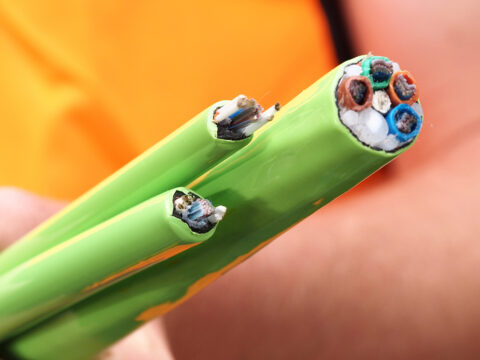Things to Know About Fiber Optic Technology
 Fiber optic technology is a method of transmitting data using light signals through strands of glass or plastic fibers. Each strand, thinner than a human hair, carries information in the form of light pulses generated by lasers or LEDs. This allows for extremely fast and reliable data transmission over long distances, making fiber optics a backbone of modern communication systems. ISI Technology provides fiber optic in Colorado Springs, Denver, Fort Collins, Arvada, Boulder, Cheyenne, and surrounding areas.
Fiber optic technology is a method of transmitting data using light signals through strands of glass or plastic fibers. Each strand, thinner than a human hair, carries information in the form of light pulses generated by lasers or LEDs. This allows for extremely fast and reliable data transmission over long distances, making fiber optics a backbone of modern communication systems. ISI Technology provides fiber optic in Colorado Springs, Denver, Fort Collins, Arvada, Boulder, Cheyenne, and surrounding areas.
One of the main advantages of fiber optic cables is their high bandwidth capacity. They can transmit significantly more data than traditional copper cables, which makes them ideal for internet services, telecommunication networks, and data centers. Fiber optics also experiences minimal signal loss, meaning data can travel for miles without requiring amplification or signal boosters.
Another key benefit is immunity to electromagnetic interference (EMI). Unlike copper wires, fiber cables do not conduct electricity, so they are not affected by electrical noise from nearby devices or power lines. This feature makes them particularly valuable in industrial settings and environments with heavy electronic equipment.
Fiber optic systems come in two main types: single-mode and multi-mode. Single-mode fibers are used for long-distance transmission, using a small core that allows light to travel in one path with minimal dispersion. Multi-mode fibers have a larger core that supports multiple light paths, suitable for shorter distances such as within buildings or campuses.
In addition to internet connectivity, fiber optics play a crucial role in medical imaging, military communications, broadcasting, and sensing technologies. They are used in endoscopes, submarines, and even smart infrastructure systems.
However, installing fiber optics can be expensive and labor-intensive, as it requires specialized equipment and skilled technicians. Despite this, the long-term benefits—such as faster speeds, greater reliability, and future scalability—make fiber optics a leading choice for next-generation communication networks.
In summary, fiber optic technology represents the future of data transmission, combining speed, reliability, and efficiency to power global communication in the digital age. Please reach out with any questions you might have, and we will be happy to help. Contact us today!











